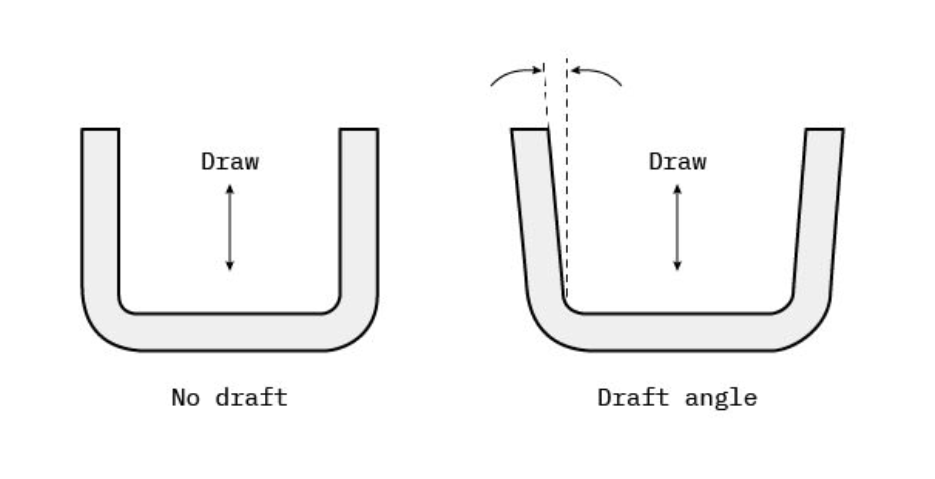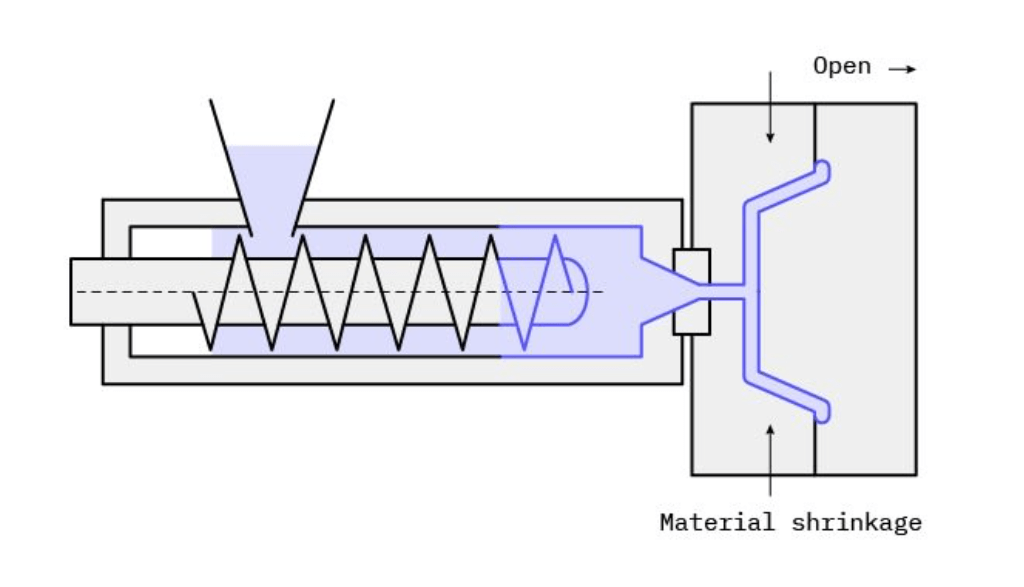Achieving flawless ejection in injection molding is a cornerstone of producing high-quality plastic parts. One key factor that plays a pivotal role in this process is the strategic implementation of draft angles.
Understanding Draft Angle
A draft angle refers to the intentional slant applied to the sides of features in injection molded parts. Positioned along the direction of the mold’s pull and parting line, these angles facilitate the seamless release of molded parts from the mold.

Draft angles are indispensable in approximately 99% of injection molding designs. They taper across the surfaces of the molded part, allowing for easy traversal within the mold’s cavities and cores during demolding.

Benefits of a Draft Angle
While molders advocate for draft angles, some mold-makers may find machining these angles on all cavity and core surfaces challenging. Nevertheless, the advantages of draft angles far outweigh the potential complexities. They are essential for ensuring molded parts meet the required quality standards, thereby averting costly production delays and issues.
The absence of a draft angle can lead to friction and vacuum-related problems during ejection. This may result in damage to the part and, in extreme cases, the mold itself. Additionally, plastics tend to shrink before cooling, potentially causing parts to adhere to the mold. A draft angle enables seamless ejection, preventing surface damage and maintaining the part’s integrity.
Furthermore, draft angles play a crucial role in preventing the formation of vacuums during ejection. Without a draft, ejection pins may exert excessive force, leading to bending, breaking, or warping of the part.
FAQ – Draft Angle for Injection Molding
Q: How to Calculate Draft Angle?
A: Calculating draft angle is straightforward. It’s measured in degrees and determined by considering the vertical axis of the mold. This angle compensates for the shrinkage of the plastic material during the molding process. In rare cases, it may be expressed in millimeters or inches.
Q: Are Elaborate Ejection Setups Necessary with Draft Angles?
A: No, draft angles streamline the ejection process, often eliminating the need for complex setups. This leads to cost savings and shorter production cycles.



Leave A Comment